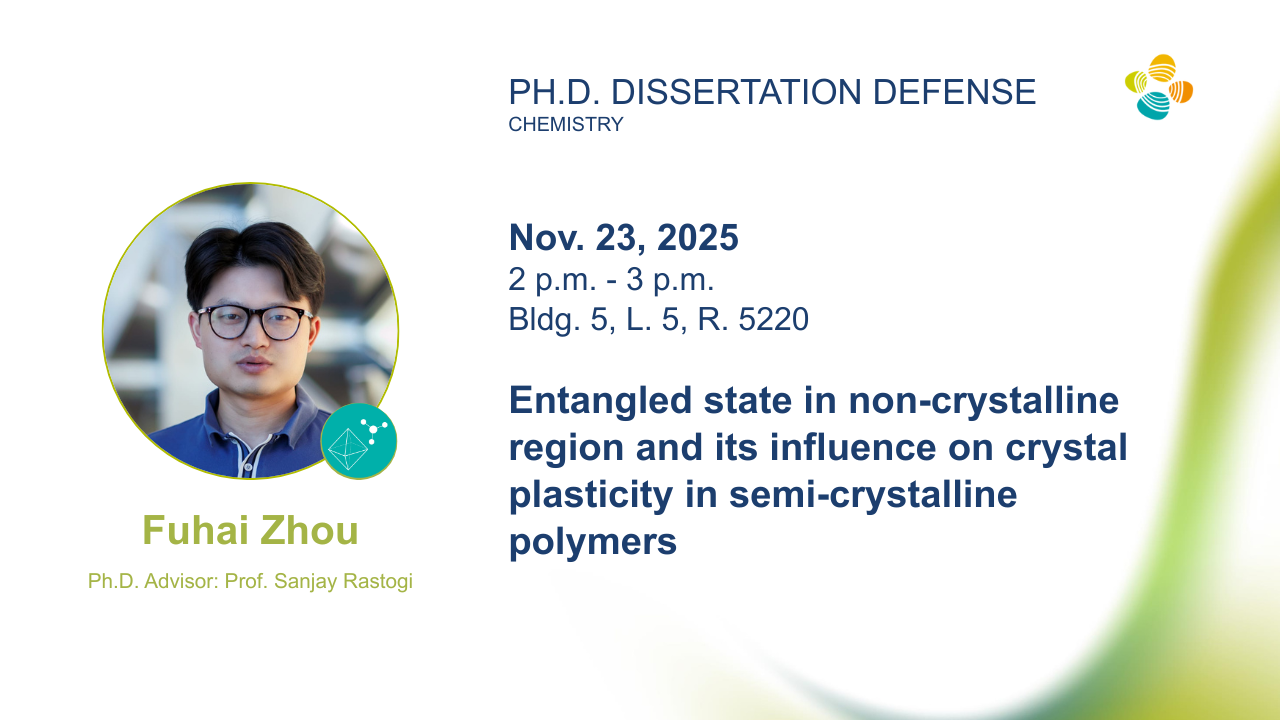Nov 2025
Entangled State in Non-Crystalline Region and Its Influence On Crystal Plasticity in Semi-Crystalline Polymers

Committee Members Information
- Ph.D. Advisor: Professor Sanjay Rastogi
- External Examiner: Professor Florian J. Stadler, King Fahd University of Petroleum & Minerals (KFUPM), KSA
- Committee Chair: Professor Javier Ruiz Martinez
- 4th Committee Member: Yoji Kobayashi
Abstract
Synthetic polymers, having high modulus and high tensile strength, are semi-crystalline materials having chains traversing between the crystalline and non-crystalline regions. While the three dimensional crystallographic order exists in the crystalline region, the differences in chain topology persists in the non-crystalline region.
The variations in the chain topology can be tuned by controlling the polymerization conditions, leading to formation of single crystals. Thickening occurs in nascent single crystals while annealing below melting temperature. Furthermore, the influence of chain topology on deformation of the crystalline regions in solid-state has been investigated.
The crystal deformation, under compression, can be so pronounced that cohesion between the nascent particles as obtained during polymerization can be achieved to an extent that the macroscopic forces can be translated to molecular length scale, leading to ultimate properties in the uniaxial and biaxial drawn films.
These concepts are translated in overcoming the persistent problem in sintering of UHMWPE used in prostheses, providing a novel route to enhance the life expectancy of the prostheses by removing grain boundaries, reducing gas permeability and adhesive as well as fatigue wear while increasing impact strength before and even after irradiation.
The topological constraints, established in the amorphous regions during crystallization from polymerization, continue to influence chain topology, deformation mechanisms, and ultimately the final mechanical properties after melt crystallization.
-jpgf64a5d6c-a745-4a2a-882b-e4f50364e8d3.jpg?sfvrsn=439c23b6_2)